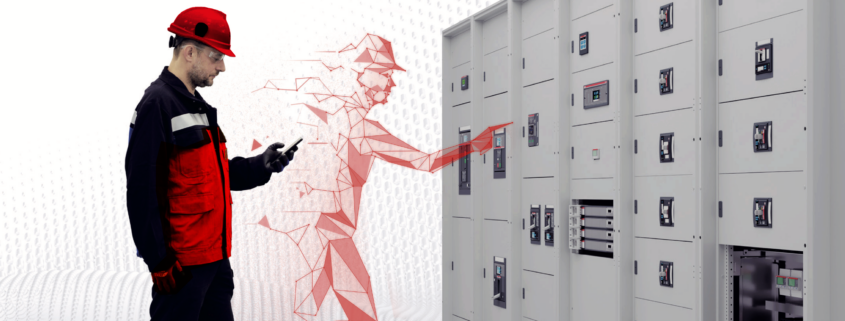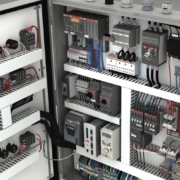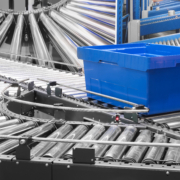Apps build both safety and a path toward digitalization
The apps available to monitor, manage, and maintain power control and protection devices offer instant benefits to both panel builders and end users. These apps also represent a simple but strong first step toward digitalization.
There are an ever-expanding number of mobile applications to simplify, speed, and improve both personal and work-related activities. People who build and work with electrical control panels can take advantage of apps that enable monitoring, management, and maintenance of breakers and other power-control devices.
For OEMs and panel builders, apps simplify and streamline component programming and commissioning. For users – the technicians responsible for maintaining a facility’s power systems – apps not only simplify their job, but also dramatically enhance their safety.
There is also a bigger-picture benefit to selecting power-control components that offer wireless interaction via apps. These apps represent a small but significant step toward electric-power system digitization and connectivity. Most OEMs and panel builders and buyers recognize the benefits of digitalization. They see that they will need to depend on digital features to install, operate, and maintain increasingly complex components and systems. And some builders and buyers are aware that stricter, future electrical standards will likely compel them to transition to digitalized components and systems.
Apps offer many benefits to OEMs and panel builders and end users, both today and for the future.
Benefits today
1. Easier configuration and commissioning
Higher-volume shops that produce multiple identical panels can accelerate the production process by taking advantage of the ability to configure a breaker or other device once, copy the configuration settings, and then replicate those setting to other devices with a few clicks. Breaker profile or configuration templates can be created, copied to the device, and then tweaked. This configuration data lives in the user’s mobile device, making field configuration just as easy.
Wireless communication eliminates the need for cables or laptops, which are difficult to handle in tight electrical environments.
Augmented reality and QR code scanning in some apps speed and simplify device installation and commissioning. The apps let you use the mobile device’s camera to automatically visually identify the component. Once identified, the app guides OEMs and panel builders to up-to-date manuals, data sheets, instruction manuals, and declarations of conformity. Apps have been shown to reduce errors and cut commissioning time in electrical rooms by up to 80%, with practically no chance of pulling the wrong hardcopy document.
Some OEM apps also provide access to add-on software that can be downloaded to the device to add customer-requested functionality or features.
2. Increased safety
Apps can greatly improve safety, both for panel builders and end-users, by enabling builders, installers, and technicians to perform many routine tasks remotely. In the past, it was impossible for personnel to maintain a safe distance from power distribution and control equipment. Installing, configuring, and maintaining the equipment required them to be hands-on. Being in contact with these devices creates the potential for electrical shock. Just being near them puts technicians in danger of arc flash. Either way, death or serious injury are a possibility.
Relying on the app eliminates the need for almost all physical contact. Many service-related activities can be done at distance of up to 33 feet.
3. Faster, simpler operation and maintenance
Beyond these benefits to OEMs and panel builders and installers, wireless communication and apps are a boon to end-user facility managers and their maintenance teams, who can remotely:
- View circuit breaker parameters including current, power, and frequency and protection settings, as well load levels and stats including contact wear and a number of other operations.
- Remotely operate the breaker and perform some maintenance activities.
- Interact with the OEM’s technical-support network, including sharing device data to facilitate troubleshooting, speeding power restoration.
- Monitor trip events and alarms.
- Download device data for review and analysis.
Some apps also use this data to perform basic analytics, like calculating contact wear or remaining service life.
Benefits for the future
OEMs and panel builders and end users relying on apps will immediately realize all the benefits described above. In addition, you will be taking a small but important step toward the inevitable digital future. Apps can collect, transmit, and sometimes store and analyze masses of data about power safety and distribution assets. As devices and systems become more complex, as systems are increasingly interconnected, and as standards become more demanding, that data will become more valuable, perhaps essential.
The industry is moving in the direction of increased digitalization. While apps are a feature today only in higher-end components, they and other digital features will become available in the future across a much broader product range. For OEMs and panel builders, the benefits to you and to your customers/end users of wireless communication via apps can be impressive and help distinguish you from your competition.
See related blog post “Three key benefits of unlocking the data in your digital components”.
—
Mike Dutoit
Product Marketing Manager
Gustavo Iaqueli
Product Marketing Manager












